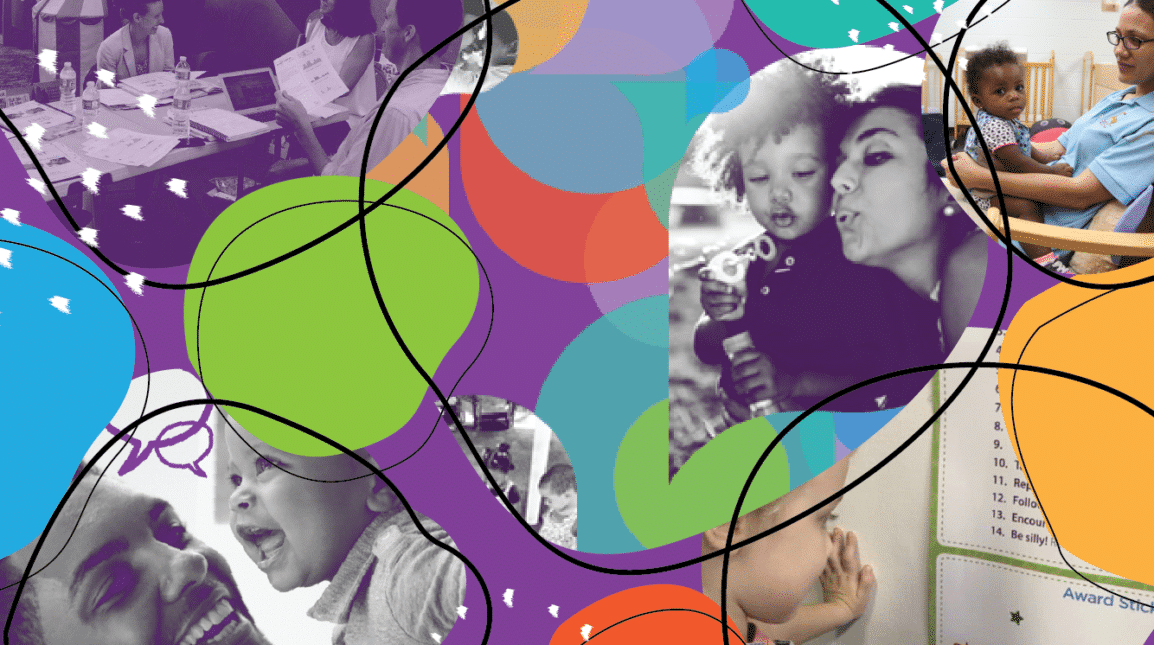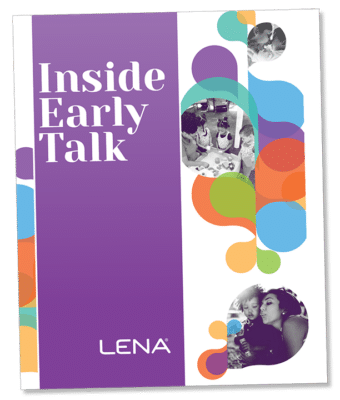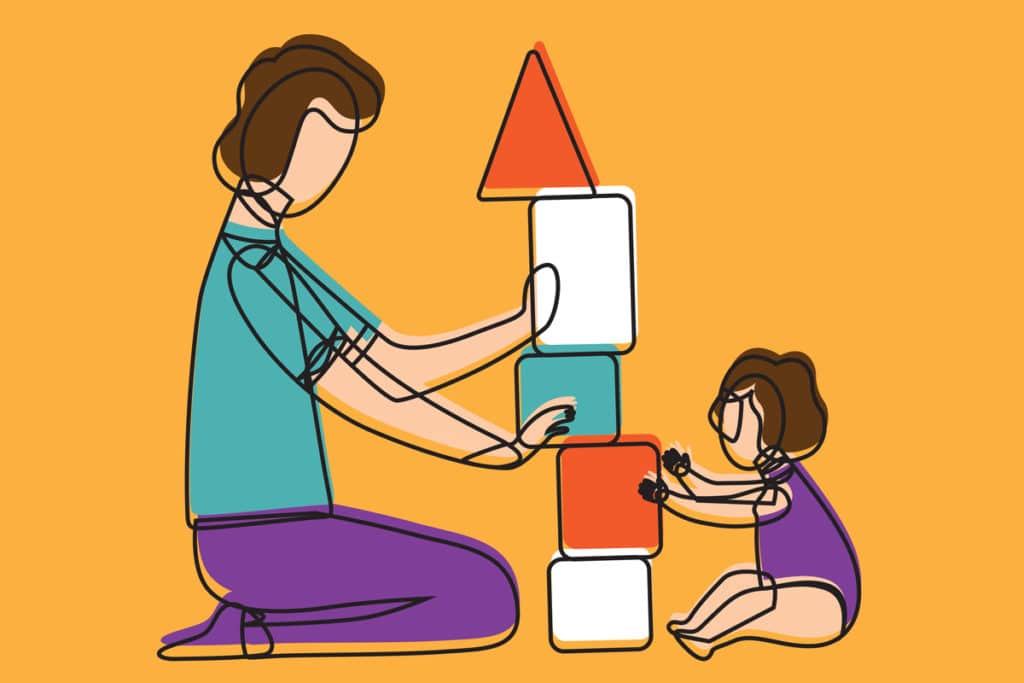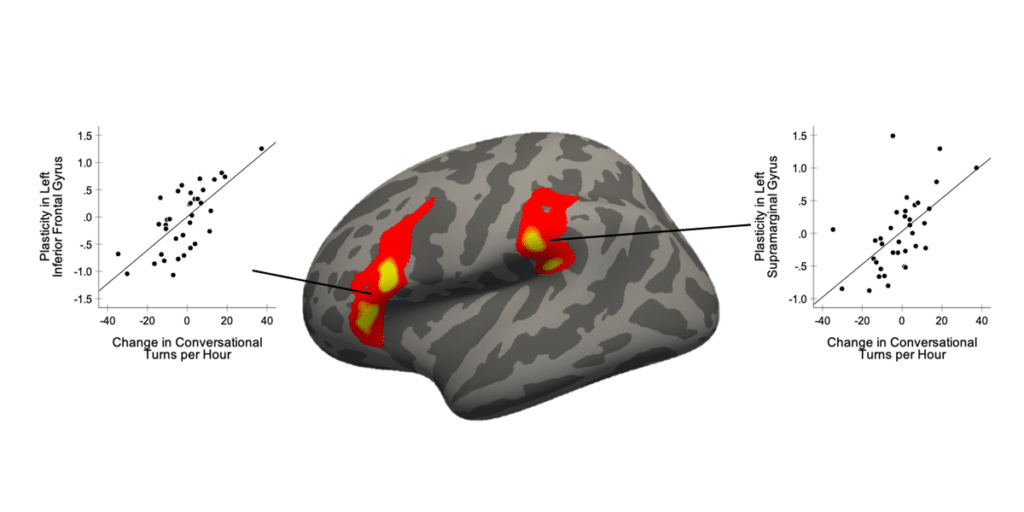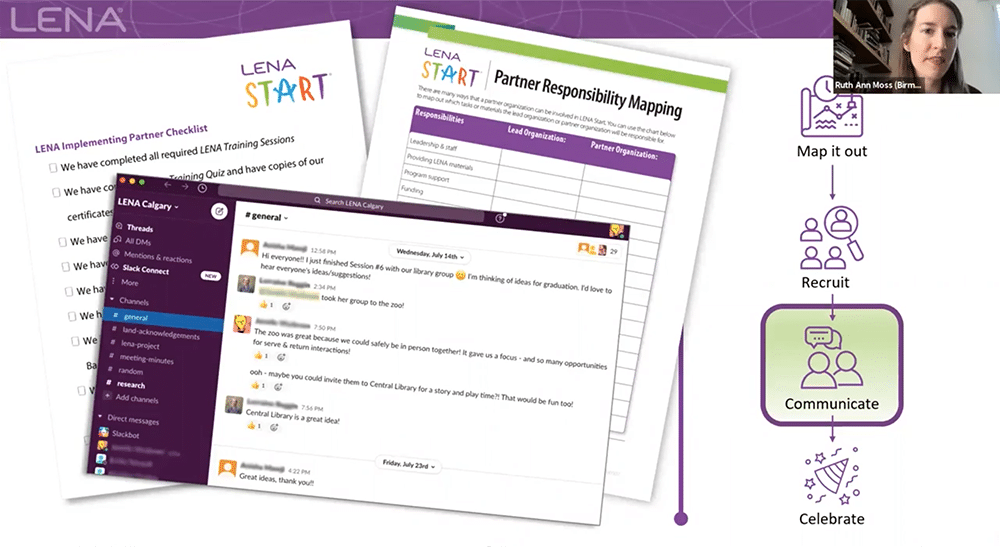This year at LENA, we’ve had the privilege of working with such a wide array of partners and telling some of their stories. There are the stories of moms and dads in Colorado and Florida who have participated in LENA Start, the stories of education professionals in Hawaiʻi, Nevada, and Texas who have brought LENA Grow and LENA Start to their communities, and the stories of researchers from all over the globe who have used LENA technology to advance our knowledge of early language environments.
Here are some of the blog posts, webinars, reports, and resources that have attracted the most eyes and ears in 2021:
Inside Early Talk: Our point of greatest leverage for improving children’s futures
In March, LENA’s research team released its Inside Early Talk report, aggregating data from over 10,000 children who have participated in LENA programs. The report distills that data into six straightforward findings. Among those findings are these two about the state of adult-child interactions in child care settings:
- Interactions are the lowest when they matter most.
- There are large disparities in the language environments children are experiencing.
To be clear, the report paints a somewhat bleak picture, but it also takes on a hopeful tone. The obstacles to high-quality, equitable care for all children are far from insurmountable, and improving early language development is among the most impactful and cost-effective ways to make real inroads in improving school readiness and lifelong success.
Download the report, read the blog post, and stream the webinar.
Make time for more talk!
Also coming out of the Inside Early Talk report was a downloadable graphic offering six simple strategies to support early brain development in infants and toddlers.
Read the blog post and download the graphic, available in Spanish and English.
How to have a conversation with a baby even before they can talk (and how LENA measures it)
We always advocate for having more back-and-forth interactions with babies, and we often say that you can’t improve what you don’t measure.
In June, we wrote a blog post that got back to basics:
- How exactly does LENA technology measure infant “talk”?
- How can adults create more conversational turns with infants?
Conversational Turns and Socioemotional Development
The number of conversational turns a child experiences at 18 months of age predicts socioemotional competencies at 30 months of age. That’s according to a research study conducted by Dr. Esteban Gómez Muzzio and Dr. Katherine Strasser at the Pontifical Catholic University of Chile.
In July, we spoke with them about the study’s wide-ranging implications, as well as the heartwarming story behind it.
“I am excited by these results,” said Dr. Jill Gilkerson, LENA’s Chief Research and Evaluation Officer. “Although researchers have been aware of the link between language and social-emotional development, this is the first paper to demonstrate this empirically using LENA. Their finding about directionality is particularly encouraging, as it suggests that intervention focused on early language interaction could directly influence social-emotional development, in addition to cognitive and language benefits.”
Read the blog post and stream the webinar.
Conversational Turns, Family-based Interventions, and Brain Growth in Children
Also in July, we spoke with Dr. Rachel Romeo, whose latest study maps out an important chain of connections linking family-based interventions, adult-child conversational turns, and brain growth in children. Published in the journal Developmental Cognitive Neuroscience, this paper builds on past research from Dr. Romeo which also investigated the relationship between conversation and children’s brain structure and function.
“This is the first study I’ve seen that has directly tied family-based intervention effects to changes in a child’s brain,” said Dr. Jill Gilkerson, LENA’s Chief Research and Evaluation Officer. “I didn’t think this would be measured in my lifetime, and it’s amazing to see.”
Structuring effective community partnerships to grow impact (Work smarter, not harder)
In October, we hosted a webinar with leaders from two LENA partners who have leveraged community partnerships to create sustainable citywide impact. When they adopted LENA, Ruth Ann Moss of Birmingham Talks and Janelle Wydeven of Calgary Reads knew their organizations couldn’t go it alone. In this webinar, they helped walk us through a four-step process to structuring effective partnerships:
- Map it out. How do you identify “good fit” partners?
- Recruit. How do you establish alignment and get them on board?
- Communicate. How do you clarify roles and responsibilities?
- Celebrate. How do you lift up your partners?
Stream the webinar and download the Guide to Building and Maintaining Community Partnerships.



